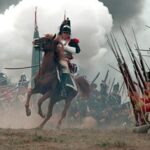Live Action Role-Playing Game (LARP) is a form of role-playing game in which participants physically portray their characters. Players pursue objectives in a fictional setting represented by the real world, while interacting with each other in the characters. The outcome of a player’s actions may be determined by the rules of the game or determined by consensus among the players. Event organizers, called gamemasters, determine the conditions and rules to be used and facilitate the game.
The first LARPs were held in the late 1970s, inspired by tabletop role-playing games and genre fiction. This activity spread around the world during the 1980s and grew into many different styles. A game can be very much like a game or more related to dramatic or artistic expression. Events can also be designed to achieve educational or political goals. The artistic genres used vary greatly, from realistic modern or historical settings to fantastical or futuristic eras. Production costs are sometimes minimal, but can include elaborate rooms and costumes. LARPs range in size from small private events lasting a few hours to large public events involving thousands of players lasting several days.
LARP participants physically portray characters in a fictional setting, improvising their characters’ speech and movements like actors in improv theater. This differs from tabletop role-playing games in which the characters’ actions are described verbally. LARPs can be played in public or in private and can last for hours or days. There is usually no audience. Players may dress as their characters and have appropriate equipment, and the environment is sometimes decorated to resemble the setting. LARPs can be one-off events or a series of events in the same setting, and events can range in size from a few players to several thousand.
Events are set up for the benefit of players, who take on roles called player characters (PCs), which players can create themselves or give them to a game master. Sometimes players replay the same character in different events, gradually developing the character and its relationships with other characters and the setting.
Organizers, called gamemasters (GMs), determine the rules and setup of the LARP, and can influence the event and act as judges while it is happening. GMs may also do the logistical work, or there may be other organizers who handle details such as event advertising, venue reservations, and financial management. Unlike the GM in a tabletop role-playing game, the GM-LARP rarely has an overview of everything that happens during the game because multiple participants may interact simultaneously. For this reason, the role of the GM LARP is often less about clearly maintaining the narrative or directly entertaining the players, and more about organizing the structure of the LARP before the game begins and facilitating the players and team to support the fictional environment during the game.
Participants, sometimes called the team, can help the GM create and maintain the LARP environment during the game by acting as work scenes or by playing non-player characters (NPCs) that fill out the setting. The team usually gets more information about the setting and more guidance from the GM than the players do. In a tabletop role-playing game, the GM usually plays all the NPCs, whereas in a LARP a separate crew member usually plays for each NPC. Sometimes players are asked to play as an NPC during an event.
Most of the game consists of interactions between characters. Some LARP scenarios primarily involve interaction between PCs. Other scenarios focus on interactions between PCs and aspects of the setting, including NPCs who are led by the GM.



